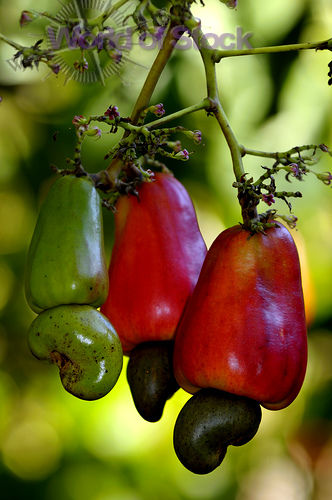
The cultivars with oval-shaped fruit tend to be sweeter in taste. Some peanuts are sold in the shell, while others are de-shelled for market.Kumquat are less popular than other citrus, but can be good to eat. The peanuts, still attached to the plant, are left in a windrow (a row of harvested plants laid in rows and exposed to the wind) to dry for several days, then combined (or processed) to separate the peanut from the vines. After the peanuts are mature, a specialized mechanical digger upends the plants to reveal the once-underground peanuts. These flower buds, once pollinated, drop their leaves and trend toward the soil, where they burrow and become root-like structures on which peanuts grow and mature for the next five months or so. Peanut plants are planted annually, grow to about 18 inches (46 centimeters) tall and then sprout small yellow flowers near the ground. They're actually legumes, a classification that includes soybeans and peas, and refers to an edible seed grown within a pod. Peanuts sprout from the roots of low plants that produce flowers above ground and must be planted annually because the plants die off each year. Unlike the rest of the nuts in our roundup, all of which grow on trees, the peanut grows under the ground. For people who enjoy the taste of almonds, this tasty nut is packed with nutrients like vitamin E, manganese, magnesium and antioxidants. The almond shells are used as livestock bedding, and the hulls are ground and fed to dairy cattle. Once collected, the almonds pass through a mechanized roller to remove the nut from the hull and shell before packaging. In the U.S., where 80 percent of the world's almond supply is grown in California's Mediterranean-type climate, the almonds are shaken from the trees and left on the ground for a week to 10 days to dry. As the pods continue to dry, the hulls turn straw-yellow and fully open when the almond is ready for harvest in the fall.
CASHEW PLANT FRUIT TASTES LIKE CRACK
These little shape-shifters look surprisingly like apricots when they are hanging from trees in their unripe state.Īs the green almond pods mature throughout the spring and summer, they darken and crack open while still on the branch, revealing almonds inside. With a fuzzy exterior covering what looks like fleshy fruit, almonds start life in disguise.

It is typically removed within 24 hours to prevent staining the interior shell and - et voila! - the pistachios we've come to know and love are revealed. When the pistachios are harvested by shaking them off the tree and onto tarps below, the epicarp is still on the nut. This ripening is evidenced by changes in color, with the hull going from pink to yellow as the nut matures.

This hull, called an epicarp, only begins to loosen after the nut is ripe. That's because pistachios are covered in a hull about 1/16 of an inch (0.4 centimeters) thick that clings to a hard inner shell.
CASHEW PLANT FRUIT TASTES LIKE CRACKED
The pistachio tree is a highly prized tree that originated in the Middle East, but pistachio trees have been successfully transplanted to many other semi-arid regions, such as portions of California, Arizona and New Mexico.Īfter a long, hot summer in the sun, pistachios are ready for harvest - but they don't yet look like the tasty little cracked nuts that can be purchased in stores. Imagine a 300-year-old tree, its gnarled branches dotted with thick clusters of salmon-colored pods set in high relief against the gold hues of its desert environment.


 0 kommentar(er)
0 kommentar(er)
